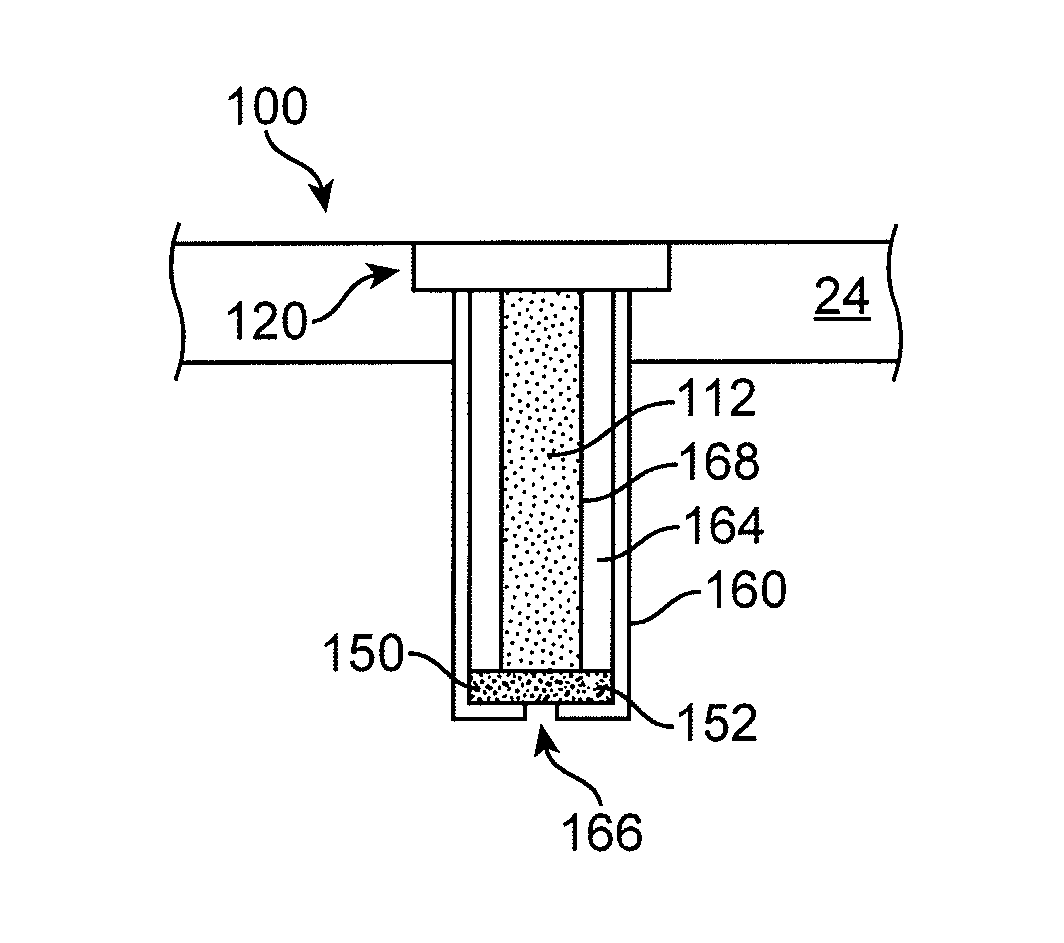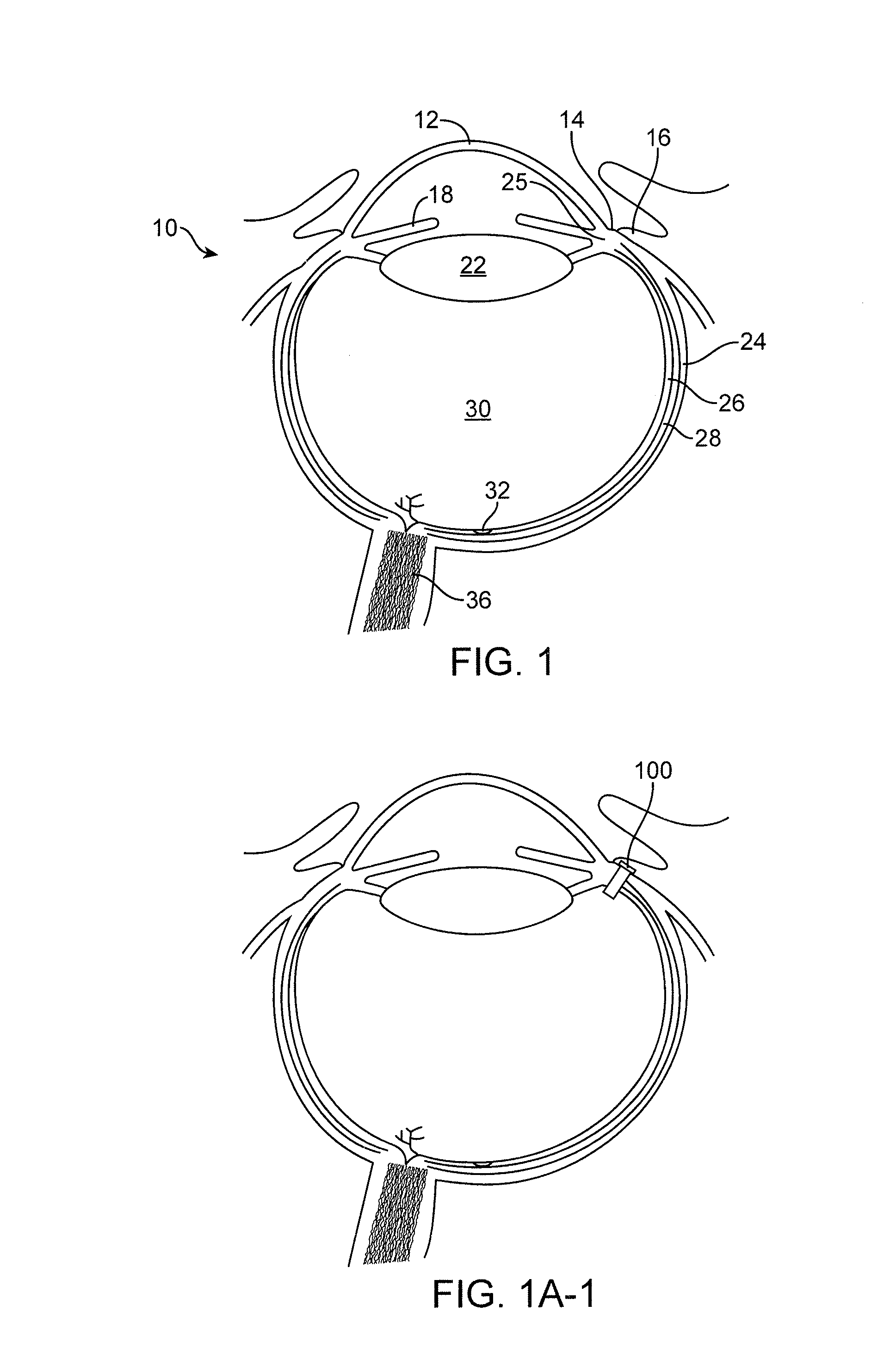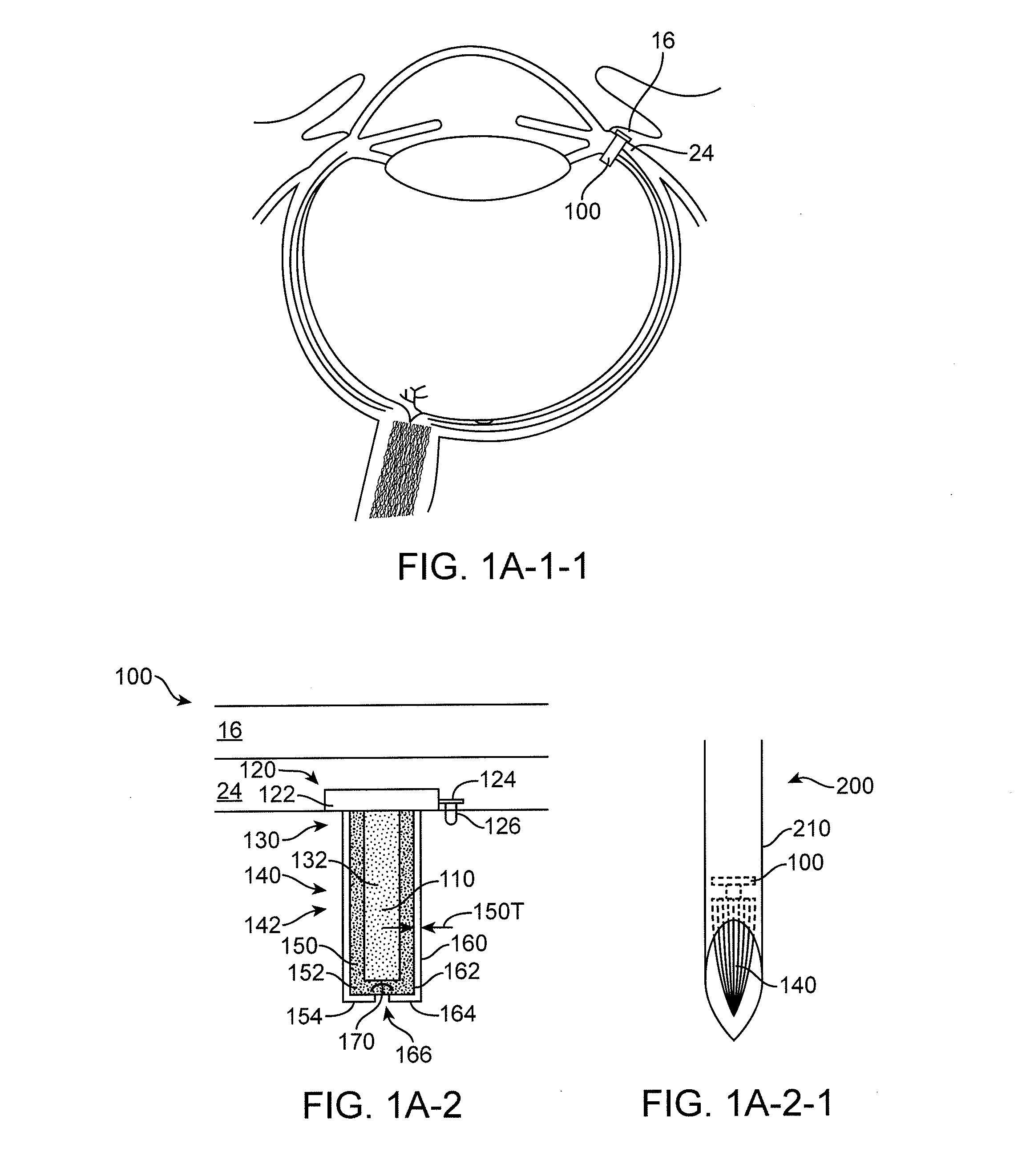Implantable therapeutic device
a therapeutic device and implantable technology, applied in the direction of intravenous devices, eye treatment, medical preparations, etc., can solve the problems of damage to the retina, poor delivery of these drugs, and affecting vision
- Summary
- Abstract
- Description
- Claims
- Application Information
AI Technical Summary
Benefits of technology
Problems solved by technology
Method used
Image
Examples
example 1
[0433]FIG. 8 shows reservoirs with exit ports of defined diameters fabricated from 1 mL syringes with Luer-Lok™ tips and needles of varying diameter. The needles were trimmed to a total length of 8 mm, where 2 mm extended beyond the needle hub. Metal burrs were removed under a microscope. FIG. 8-1 shows the needles attached to syringes which were then filled with a solution of 2.4 mg / mL fluorescein sodium, molecular weight 376 Da, in phosphate buffer (Spectrum Chemicals, B-210.). Bubbles were removed and the syringes were adjusted to be able to dispense 0.05 mL. The shape of the resulting reservoir is shown in FIG. 8-1. The first expanded region is defined by the inside of the needle hub and the tip of the syringe. The second expanded region is inside the syringe. The total volume of the reservoir is 0.14 mL.
[0434]Once filled, the outside of the reservoirs were rinsed of excess fluorescein by submerging in PBS.
[0435]FIG. 8-2 shows the reservoirs placed into 4 mL vials containing 1.5...
example 2
[0438]FIG. 11 shows reservoirs with a porous membrane fabricated by cutting off the Luer-Lok tip on 1 mL syringes. The end of the syringe was smoothed and beveled. A nylon membrane with 0.2 μm pore size was placed over the end of the syringe and secured with a piece of silicone tubing. The inner diameter of the syringe was 4.54 mm, yielding an exposed membrane area of 16 mm2. The piston was removed so that approximately 100 mL of 300 mg / mL bovine serum albumin (BSA, Sigma A7906-100G) in PBS could be added. The piston was replaced and moved to remove the air and to push a small amount of the liquid through the membrane. The outside of the membrane and syringe was rinsed by submerging briefly in water. The reservoirs were then placed into 15 mL vials containing 5 mL PBS. The tops of the vials were sealed with parafilm to avoid evaporation. At periodic intervals of 0.5-1 day, the reservoirs were moved to new vials containing PBS. Diffusion through the membrane was determined by measuri...
example 3
[0439]An experiment was performed to screen chromatographic media (Bio-Rad) for binding to Human IgG (Jackson ImmunoResearch, ChromPure). Columns were packed with the ten media listed below and were equilibrated in 20 mM acetate buffer pH 4.5.
TABLE 2Macro-Prep t-Butyl HIC SupportMacro-Prep DEAE SupportCHT Ceramic Hydroxyapatite Type I 40 umMacro-Prep CM SupportMacro-Prep Methyl HIC SupportMacro-Prep Ceramic Hydroxyapatite Type II 40 umUNOsphere S Cation Exchange SupportUNOsphere Q Strong Anion Exchange SupportMacro-Prep High S SupportMacro-Prep High Q Support
[0440]Then, 0.5 mL aliquots of 1 mg / mL antibody in 20 mM acetate buffer pH 4.5 were gravity-driven through the column and the collected solution was assessed qualitatively for color change using a BCA™ protein assay kit (Pierce). Of the media tested, Macro-Prep CM Support, Macro-Prep High S Support, and Macro-Prep Ceramic Hydroxapatite Type II 40 urn each successfully bound IgG. Subsequently, PBS was washed through the columns a...
PUM
 Login to View More
Login to View More Abstract
Description
Claims
Application Information
 Login to View More
Login to View More - R&D
- Intellectual Property
- Life Sciences
- Materials
- Tech Scout
- Unparalleled Data Quality
- Higher Quality Content
- 60% Fewer Hallucinations
Browse by: Latest US Patents, China's latest patents, Technical Efficacy Thesaurus, Application Domain, Technology Topic, Popular Technical Reports.
© 2025 PatSnap. All rights reserved.Legal|Privacy policy|Modern Slavery Act Transparency Statement|Sitemap|About US| Contact US: help@patsnap.com



